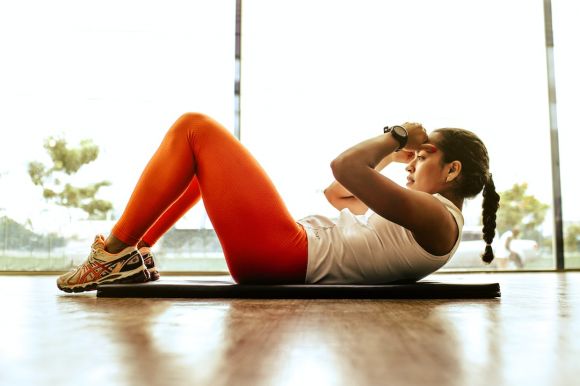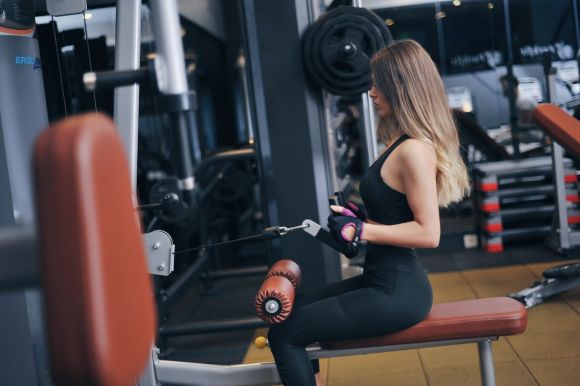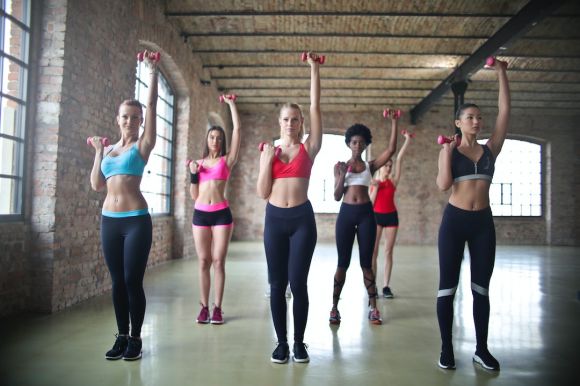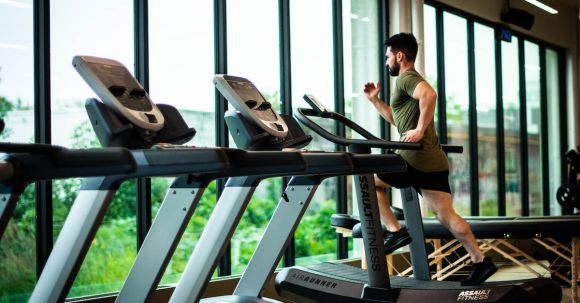Cardiovascular exercise, often referred to as cardio, is an essential component of any fitness routine. Whether you're a seasoned athlete or just starting out on your fitness journey, it's important to measure the intensity of your cardio workouts to ensure that you are getting the most out of your efforts. By tracking your intensity levels, you can gauge your progress and make adjustments to your routine as needed. In this article, we will explore some effective methods for measuring the intensity of your cardio workouts.
Cardiovascular exercises
Cardio workouts are a fantastic way to improve your cardiovascular health and burn calories. However, if not done correctly, they can also lead to injuries. To ensure that you get the most out of your cardio sessions without risking harm, it is important to take certain precautions. In this article, we will explore some tips on how to prevent injuries during cardio workouts.
Warm Up Properly
One of the most crucial steps in preventing injuries during cardio workouts is to warm up properly. Before jumping into a high-intensity exercise, it is essential to prepare your body by gradually increasing your heart rate and loosening up your muscles. A good warm-up can include dynamic stretches, light jogging, or even some jumping jacks. Taking just a few minutes to warm up can make a significant difference in preventing strains and other injuries.Use Proper Form
Another important aspect of injury prevention during cardio workouts is using proper form. Whether you are running, cycling, or doing high-impact exercises, maintaining the correct posture and technique is crucial. For example, when running, make sure to land on the balls of your feet instead of your heels to avoid unnecessary strain on your joints. Similarly, when cycling, adjust the seat height to ensure proper alignment of your knees and hips. Paying attention to your form can help you avoid injuries and maximize the effectiveness of your workouts.Gradually Increase Intensity
It can be tempting to push yourself too hard during cardio workouts, especially if you are determined to achieve quick results. However, this can be a recipe for disaster. To prevent injuries, it is important to gradually increase the intensity of your workouts over time. This allows your body to adapt and become stronger without putting excessive stress on your muscles and joints. Start with shorter sessions and lower intensities, then gradually build up as your fitness level improves.Listen to Your Body
One of the most important things you can do to prevent injuries during cardio workouts is to listen to your body. Pay attention to any signs of pain or discomfort, and take them seriously. Pushing through pain can lead to more severe injuries and longer recovery times. If something doesn't feel right, it is better to take a break or consult with a healthcare professional rather than risking further damage. Remember, your body knows best, so trust its signals.Allow for Adequate Recovery
While it is important to challenge yourself during cardio workouts, it is equally important to allow for adequate recovery. Overtraining can lead to fatigue, decreased performance, and an increased risk of injuries. Make sure to schedule rest days in your workout routine and incorporate activities that promote recovery, such as stretching and foam rolling. Giving your body time to rest and repair will help you prevent injuries and optimize your overall fitness progress. In conclusion, preventing injuries during cardio workouts is crucial for maintaining a safe and effective fitness routine. By warming up properly, using proper form, gradually increasing intensity, listening to your body, and allowing for adequate recovery, you can minimize the risk of injuries and enjoy the numerous benefits of cardio exercise. So lace up your shoes, grab your water bottle, and get ready to sweat safely!
Getting a good night's sleep is essential for our overall well-being. It helps us recharge our bodies and minds, allowing us to wake up feeling refreshed and ready to take on the day. However, many people struggle with sleep issues, finding it difficult to fall asleep or stay asleep throughout the night. If you're one of those people, incorporating cardio exercises into your daily routine may be the solution you've been looking for. In this article, we'll explore how cardio exercises can improve your sleep and relaxation, and we'll also provide you with some examples to get you started.
The Link Between Cardio Exercises and Sleep
Engaging in regular cardio exercises has been proven to improve sleep quality and duration. When we exercise, our body temperature rises, and afterward, it begins to cool down. This drop in body temperature signals to our brain that it's time to sleep, helping us fall asleep faster and stay asleep longer. Cardio exercises also help reduce stress and anxiety, two common factors that can disrupt sleep. When we engage in physical activity, our body releases endorphins, which are known as "feel-good" hormones. These hormones act as natural stress and anxiety reducers, promoting relaxation and better sleep.Examples of Cardio Exercises for Better Sleep and Relaxation
1. Running or Jogging: Lace up your running shoes and hit the pavement for a run or jog. Running is a high-intensity cardio exercise that not only improves cardiovascular health but also helps you burn calories and reduce stress. Aim for at least 30 minutes of running three times a week to reap the sleep benefits. 2. Cycling: Whether you prefer an outdoor bike ride or an indoor stationary bike, cycling is an excellent cardio exercise for sleep improvement. It's a low-impact activity that works your leg muscles while keeping your heart rate up. Try cycling for 45 minutes, four times a week, to maximize the sleep-inducing effects. 3. Swimming: Dive into the pool for a refreshing swim session. Swimming is a full-body workout that is gentle on your joints and provides a great cardiovascular workout. The rhythmic movement and the water's soothing properties can help you relax and prepare for a restful night's sleep. Aim for 30 minutes of swimming three times a week to experience the sleep benefits. 4. Jumping Rope: An inexpensive and portable exercise tool, a jump rope can be used anywhere to get your heart pumping. Jumping rope is a high-intensity cardio exercise that engages your entire body, making it an effective way to burn calories and improve sleep. Start with five minutes of jumping rope and gradually increase your time as your fitness level improves.Incorporating Cardio Exercises into Your Routine
To make cardio exercises a regular part of your routine, start by setting realistic goals. Begin with shorter workout durations and gradually increase the length and intensity as your fitness level improves. It's also important to find activities that you enjoy, as you'll be more likely to stick with them in the long run. Consider incorporating cardio exercises into your morning routine to reap the sleep benefits throughout the day. Exercising in the morning not only jumpstarts your metabolism but also helps regulate your sleep-wake cycle. If morning workouts aren't feasible for you, aim for a workout at least three hours before bedtime to allow your body temperature to cool down.Conclusion
Regular cardio exercises offer numerous benefits for sleep and relaxation. By incorporating activities such as running, cycling, swimming, or jumping rope into your routine, you can improve the quality and duration of your sleep. Remember to set realistic goals, find activities you enjoy, and make exercise a consistent part of your daily routine. With time, you'll experience the sleep benefits and wake up feeling refreshed, rejuvenated, and ready to conquer the day.
In today's fast-paced world, stress has become an inevitable part of our lives. From work pressures to personal responsibilities, it can often feel overwhelming. However, there is a powerful tool that can help us combat stress and improve our mental well-being – cardio exercises.
The link between exercise and mental health has been extensively studied, and the results are clear – physical activity can have a profound impact on our psychological well-being. Cardio exercises, in particular, have been found to be highly effective in reducing stress levels and promoting a positive mindset. Let's delve deeper into the world of cardio and explore some exercises that can help us achieve stress relief and mental well-being.
Running: The Ultimate Stress Buster
Running is a popular cardio exercise that has numerous benefits for both the body and mind. When we run, our brain releases endorphins, which are often referred to as the "feel-good" hormones. These endorphins help alleviate stress, boost our mood, and promote a sense of well-being. Additionally, running allows us to disconnect from our daily worries and immerse ourselves in the present moment, which can be incredibly therapeutic.Cycling: Pedal Your Worries Away
Cycling is another excellent cardio exercise for stress relief and mental well-being. Whether it's outdoor biking or indoor stationary cycling, the rhythmic movement can have a calming effect on our minds. As we pedal, our body releases endorphins, which help reduce stress and anxiety. Cycling also allows us to explore new surroundings, whether it's a scenic trail or a virtual cycling class, which can provide a refreshing change of scenery for our minds.Dancing: Let Loose and Unwind
If you're looking for a cardio exercise that feels more like fun than work, dancing is the perfect choice. Whether it's salsa, hip-hop, or Zumba, dancing allows us to express ourselves and let loose. Not only does it provide an excellent cardiovascular workout, but it also promotes stress relief and mental well-being. The combination of music, movement, and social interaction can boost our mood, increase self-confidence, and reduce stress levels.Jumping Rope: Simple yet Effective
Jumping rope may seem like a simple childhood pastime, but it is actually a highly effective cardio exercise for stress relief. Jumping rope increases our heart rate and gets our blood pumping, which releases endorphins and helps alleviate stress. It also improves coordination and focus, as we need to time our jumps and maintain a rhythm. Jumping rope can be done anywhere, making it a convenient and accessible exercise for stress relief.Swimming: Dive into Serenity
Swimming is a low-impact cardio exercise that offers a multitude of benefits for our mental well-being. The rhythmic movements and the sensation of being in water can have a calming effect on our minds, similar to meditation. Swimming also releases endorphins, reduces muscle tension, and promotes relaxation. Whether it's a leisurely swim or an intense workout, the water provides a serene environment for stress relief. Incorporating cardio exercises into our daily routine can have a profound impact on our stress levels and mental well-being. Whether it's running, cycling, dancing, jumping rope, or swimming, these exercises offer not only physical benefits but also provide an opportunity for us to disconnect from our worries, boost our mood, and promote a positive outlook on life. So, lace up your running shoes, hop on your bike, or hit the dance floor – your mind will thank you for it.
In today's fast-paced society, self-confidence and self-esteem are crucial for personal and professional success. They play a significant role in our overall well-being and how we perceive ourselves. While there are various ways to improve self-confidence and self-esteem, engaging in cardio exercises can be a powerful tool. Not only does it benefit our physical health, but it also has a positive impact on our mental and emotional well-being. In this article, we will explore how cardio exercises can boost self-confidence and self-esteem.
Enhancing Physical Fitness
One of the primary benefits of cardio exercises is improved physical fitness. Engaging in activities such as running, cycling, swimming, or dancing helps increase cardiovascular endurance, strengthens muscles, and improves overall body composition. As we become physically stronger and fitter, we naturally feel more confident in our abilities and appearance. The knowledge that we can overcome physical challenges and push ourselves beyond our limits fosters a sense of self-assurance and empowerment.Releasing Endorphins
Cardio exercises release endorphins, also known as "feel-good" hormones, in our bodies. These chemicals interact with receptors in our brain, reducing pain perception and inducing feelings of pleasure and happiness. The release of endorphins during cardio workouts can create a euphoric state known as the "runner's high." This natural high not only enhances our mood but also boosts our self-confidence and self-esteem. Feeling good about ourselves and our accomplishments during exercise translates into a more positive self-perception outside of the gym.Improving Mental Clarity
Engaging in cardio exercises has been linked to improved mental clarity and cognitive function. Regular aerobic activity increases blood flow to the brain, supplying it with oxygen and nutrients necessary for optimal functioning. This surge of blood flow stimulates the release of brain-derived neurotrophic factor (BDNF), a protein that promotes the growth of new brain cells and enhances neural connections. As a result, we experience improved focus, enhanced memory, and heightened mental acuity. This mental clarity positively impacts our self-esteem, as we feel more capable and competent in our daily lives.Reducing Stress and Anxiety
Cardio exercises are an excellent way to combat stress and anxiety, both of which can hinder self-confidence and self-esteem. Physical activity stimulates the production of neurotransmitters like serotonin and dopamine, which are known to regulate mood and reduce stress levels. Engaging in cardio workouts allows us to release pent-up tension and negative emotions, providing a sense of relief and relaxation. As stress and anxiety decrease, our self-confidence and self-esteem naturally increase, allowing us to approach challenges with a calmer and more positive mindset.Fostering a Sense of Achievement
Setting and achieving goals is an important aspect of building self-confidence and self-esteem. Engaging in cardio exercises allows us to set personal fitness goals, whether it's completing a 5K run, increasing endurance, or improving speed. As we progress towards these goals, we experience a sense of accomplishment and pride in our abilities. This feeling of achievement not only boosts self-confidence but also reinforces the belief that we are capable of setting and attaining goals in other areas of our lives. In conclusion, cardio exercises offer numerous benefits for boosting self-confidence and self-esteem. By improving physical fitness, releasing endorphins, enhancing mental clarity, reducing stress and anxiety, and fostering a sense of achievement, cardio workouts empower us to embrace our capabilities and feel more confident in ourselves. So, lace up your sneakers, find an activity you enjoy, and let the cardio exercises lead you to greater self-assurance and a positive self-image.
In today's fast-paced world, finding time for exercise can be a challenge. Between work, family, and other responsibilities, it often feels like there just aren't enough hours in the day. However, incorporating cardio workouts into your daily routine is not only beneficial for your physical health but also for your mental well-being. By making a few simple adjustments and prioritizing your fitness, you can easily fit cardio workouts into even the busiest of schedules.
1. Start with a plan
The first step in fitting cardio workouts into a busy schedule is to create a plan. Take a few minutes to assess your daily routine and identify pockets of time that can be dedicated to exercise. Whether it's waking up 30 minutes earlier or utilizing your lunch break, having a clear plan in place will help you stay motivated and committed to your fitness goals.2. Utilize High-Intensity Interval Training (HIIT)
One of the most efficient ways to incorporate cardio into a busy schedule is through High-Intensity Interval Training (HIIT). HIIT workouts involve short bursts of intense exercise followed by brief recovery periods. These workouts can be completed in as little as 15-20 minutes and provide the same cardiovascular benefits as longer, steady-state workouts. By maximizing your effort during these short bursts, you can achieve a high level of cardiovascular fitness in less time.3. Multitask with active transportation
Another way to fit cardio workouts into your busy schedule is by incorporating active transportation into your daily routine. Instead of driving to work or running errands, consider walking, biking, or using public transportation. Not only will this help you get your heart rate up, but it will also save you time and money on parking. Look for opportunities to be active throughout your day, such as taking the stairs instead of the elevator or going for a walk during your lunch break.4. Schedule workouts as non-negotiable appointments
Treat your cardio workouts as non-negotiable appointments and schedule them into your calendar. Just like you wouldn't cancel a meeting or a doctor's appointment, prioritize your fitness and commit to your scheduled workouts. By viewing exercise as an essential part of your day, you'll be more likely to make it a priority and follow through.5. Make use of technology
Technology can be a helpful tool in fitting cardio workouts into a busy schedule. There are a variety of fitness apps and online platforms that offer guided workout routines that can be done from the comfort of your own home. Whether it's a 20-minute workout video or a virtual cardio class, these resources provide convenience and flexibility for those with limited time.6. Break it up throughout the day
If finding a solid block of time for a workout seems impossible, consider breaking it up into smaller increments throughout the day. Research has shown that even short bouts of exercise can have significant health benefits. Try fitting in 10 minutes of cardio in the morning, another 10 minutes during your lunch break, and a final 10 minutes in the evening. These shorter workouts can add up and provide the same benefits as a longer, continuous workout.7. Find activities you enjoy
Lastly, finding activities that you enjoy can make fitting cardio workouts into your busy schedule feel less like a chore. Whether it's dancing, swimming, or playing a sport, incorporating activities that you genuinely enjoy into your fitness routine will make it easier to find the time and motivation to exercise. In conclusion, fitting cardio workouts into a busy schedule is achievable with proper planning and prioritization. By utilizing high-intensity interval training, incorporating active transportation, and making use of technology, you can easily find time for cardio exercise in your daily routine. Remember to treat your workouts as non-negotiable appointments, break up your exercise throughout the day if needed, and find activities that you genuinely enjoy. With these strategies in place, you'll be on your way to a healthier, more active lifestyle.
As we age, it becomes increasingly important to prioritize our cardiovascular health. Engaging in regular physical activity can significantly reduce the risk of heart disease, stroke, and other cardiovascular conditions. In addition to maintaining a healthy diet and lifestyle, incorporating cardiovascular exercises into our daily routine is essential for promoting healthy aging. In this article, we will explore the benefits of cardiovascular exercises for seniors and provide some examples of exercises that can be easily incorporated into their fitness regimen.
Why Cardiovascular Exercises?
Cardiovascular exercises, also known as aerobic exercises, are activities that increase the heart rate and improve the body's ability to utilize oxygen. These exercises strengthen the heart and lungs, improve circulation, and keep the cardiovascular system healthy. Engaging in regular cardiovascular exercises has numerous benefits for seniors, including: 1. Reduced risk of heart disease: Regular aerobic exercises help lower blood pressure, reduce bad cholesterol levels, and improve overall heart health, significantly reducing the risk of heart disease. 2. Improved brain health: Cardiovascular exercises stimulate blood flow to the brain, improving cognitive function and reducing the risk of cognitive decline and dementia. 3. Increased energy levels: Engaging in regular aerobic exercises boosts energy levels, reduces fatigue, and enhances overall stamina and endurance. 4. Better weight management: Cardiovascular exercises burn calories, helping seniors maintain a healthy weight and reduce the risk of obesity-related health issues. 5. Enhanced mood and mental well-being: Aerobic exercises release endorphins, the body's natural feel-good hormones, which can help reduce symptoms of depression and anxiety, promoting better mental well-being.Examples of Cardiovascular Exercises for Seniors
1. Walking: Walking is a low-impact cardiovascular exercise that can be easily incorporated into a senior's daily routine. Whether it's a brisk walk around the neighborhood or on a treadmill, walking helps strengthen the heart, improve circulation, and maintain joint flexibility. 2. Swimming: Swimming is an excellent cardiovascular exercise that is gentle on the joints. It provides a full-body workout, improves lung capacity, and enhances cardiovascular endurance. Seniors can consider joining water aerobics classes or simply swimming laps in a pool. 3. Cycling: Cycling, whether outdoor or indoor on a stationary bike, is a low-impact exercise that strengthens the heart and leg muscles. It improves cardiovascular fitness and can be tailored to each individual's fitness level. 4. Dancing: Dancing is a fun and enjoyable way to get the heart pumping. It improves cardiovascular fitness, balance, coordination, and flexibility. Seniors can join dance classes specifically designed for their age group or simply dance at home to their favorite tunes. 5. Chair exercises: For seniors with limited mobility, chair exercises are a great option. These exercises can be done while sitting or holding onto a chair for support. Examples include seated leg raises, arm circles, and seated marching.Incorporating Cardiovascular Exercises into Daily Routine
To make cardiovascular exercises a regular part of your daily routine, consider the following tips: 1. Start slow: If you're new to exercise or have been inactive for a while, start with shorter sessions and gradually increase the duration and intensity of your workouts. 2. Find a workout buddy: Exercising with a friend or joining a fitness group can provide motivation and make exercising more enjoyable. 3. Set realistic goals: Set achievable goals for yourself and track your progress. This will help you stay motivated and monitor your cardiovascular fitness improvements. 4. Be consistent: Aim for at least 150 minutes of moderate-intensity cardiovascular exercise per week, spread out over several days. Consistency is key to reaping the benefits of these exercises. In conclusion, cardiovascular exercises are crucial for maintaining a healthy heart and promoting overall well-being as we age. Incorporating activities like walking, swimming, cycling, dancing, or chair exercises into our daily routine can significantly improve cardiovascular fitness, reduce the risk of heart disease, and enhance mental well-being. Remember to start slowly, set realistic goals, and be consistent. Stay active, and enjoy the many benefits that cardiovascular exercises bring to your life as you age gracefully.
When it comes to burning calories and shedding those extra pounds, cardio exercises are the way to go. Cardiovascular exercises elevate your heart rate and increase your breathing, helping you burn more calories in a shorter amount of time. In this article, we will explore some of the best cardio exercises that can help you achieve your weight loss goals.
Running
Running is a classic cardio exercise that is not only effective but also convenient. All you need is a good pair of running shoes and you're ready to go. Whether you choose to run outdoors or on a treadmill, running can help you burn a significant amount of calories in a short period of time. Plus, it strengthens your leg muscles and improves your cardiovascular endurance.Cycling
Cycling is another excellent cardio exercise that can help you burn calories and strengthen your lower body. Whether you choose to ride a stationary bike at the gym or cycle outdoors, this low-impact exercise is perfect for people of all ages and fitness levels. Cycling not only burns calories but also helps improve your balance and coordination.Jumping Rope
Jumping rope is a fun and effective cardio exercise that can be done almost anywhere. Not only does it burn calories, but it also engages multiple muscle groups, including your arms, shoulders, and legs. Jumping rope is a high-intensity exercise that can help improve your cardiovascular endurance and coordination. Plus, it requires minimal equipment and can be easily incorporated into your workout routine.Swimming
Swimming is a low-impact, full-body workout that can help you burn a significant amount of calories. It engages all major muscle groups and provides a great cardiovascular workout. Whether you choose to swim laps or participate in a water aerobics class, swimming is a refreshing and effective way to burn calories and improve your overall fitness.High-Intensity Interval Training (HIIT)
High-Intensity Interval Training, or HIIT, is a type of cardio exercise that involves short bursts of intense exercise followed by brief periods of rest. This type of workout not only burns calories during the exercise but also continues to burn calories even after you've finished. HIIT can be done with a variety of exercises, such as running, cycling, or bodyweight exercises, and is a time-efficient way to maximize calorie burn.Dancing
Dancing is a fun and enjoyable way to burn calories and improve your cardiovascular health. Whether you choose to take a Zumba class, participate in a dance fitness video, or simply dance around your living room, dancing can be a great cardio workout. It not only burns calories but also improves coordination, balance, and flexibility.Rowing
Rowing is a full-body cardio exercise that engages multiple muscle groups, including your arms, legs, and core. Whether you choose to row on a rowing machine at the gym or rowing on the water, this low-impact exercise is a great way to burn calories and improve your cardiovascular fitness. Rowing also provides a great upper body workout and helps improve posture. In conclusion, there are many different cardio exercises that can help you burn calories and achieve your weight loss goals. Whether you prefer running, cycling, jumping rope, swimming, HIIT, dancing, or rowing, incorporating these exercises into your routine can help you burn calories, improve your cardiovascular health, and reach your fitness goals. So, lace up your shoes, jump on your bike, or hit the dance floor, and start burning those calories today!
Maintaining a strong immune system is crucial for overall health and well-being. While there are various ways to boost your immune system, engaging in regular cardiovascular exercises can be a particularly effective method. Cardiovascular exercises not only help improve your cardiovascular health but also have a positive impact on your immune system. In this article, we will explore the benefits of cardiovascular exercises for strengthening your immune system and provide some useful tips on incorporating these exercises into your daily routine.
Enhanced Blood Circulation
One of the key benefits of cardiovascular exercises is improved blood circulation throughout your body. When you engage in activities such as running, cycling, or swimming, your heart rate increases, pumping more oxygen-rich blood to your organs and tissues. This increased blood flow allows your immune cells to travel more efficiently, enhancing their ability to identify and eliminate pathogens.Reduced Chronic Inflammation
Chronic inflammation is known to weaken the immune system and increase the risk of various diseases. Regular cardiovascular exercises can help reduce chronic inflammation by lowering the levels of pro-inflammatory markers in your body. These exercises stimulate the production of anti-inflammatory molecules, which can counteract the negative effects of chronic inflammation and strengthen your immune system.Improved Stress Management
Stress has a significant impact on our immune system, making us more susceptible to illnesses. Engaging in cardiovascular exercises can be an excellent way to manage stress levels effectively. When you exercise, your brain releases endorphins, which are natural mood boosters. These endorphins help reduce stress and anxiety, promoting a more robust immune system.Increased Production of Antibodies
Cardiovascular exercises also play a role in boosting the production of antibodies, which are proteins that help fight off infections. Regular exercise stimulates the release of immune cells called B cells, which are responsible for producing antibodies. By increasing the production of antibodies, cardiovascular exercises can help strengthen your immune system's ability to defend against pathogens.Tips for Incorporating Cardiovascular Exercises into Your Routine
Now that we understand the benefits of cardiovascular exercises for strengthening the immune system, let's explore some practical tips for incorporating these exercises into your daily routine: 1. Start Slowly: If you are new to cardiovascular exercises, it is essential to start slowly and gradually increase the intensity and duration of your workouts. This approach will help prevent injuries and allow your body to adapt gradually. 2. Choose Activities You Enjoy: Find cardiovascular exercises that you enjoy doing to ensure consistency. Whether it's jogging, dancing, or playing a sport, engaging in activities you genuinely love will make it easier to stick to your exercise routine. 3. Set Realistic Goals: Set realistic goals for yourself, considering your current fitness level and lifestyle. By setting achievable targets, you will stay motivated and avoid feeling overwhelmed. 4. Mix It Up: Keep your cardiovascular exercise routine interesting by incorporating a variety of activities. This will not only prevent boredom but also challenge different muscle groups and enhance overall fitness. 5. Stay Hydrated: Remember to drink plenty of water before, during, and after your workouts to stay hydrated and support optimal immune function. In conclusion, regular cardiovascular exercises can be an effective way to strengthen your immune system. By enhancing blood circulation, reducing chronic inflammation, improving stress management, and increasing the production of antibodies, these exercises provide numerous benefits for your overall health. By incorporating cardiovascular exercises into your daily routine and following the tips mentioned above, you can take proactive steps towards boosting your immune system and maintaining optimal health.
Cardiovascular exercises, also known as cardio or aerobic exercises, are an essential part of any fitness routine. These exercises increase the heart rate, strengthen the cardiovascular system, and improve overall health and fitness. If you're a beginner looking to incorporate cardio into your workout routine, this guide will provide you with the necessary information to get started.









